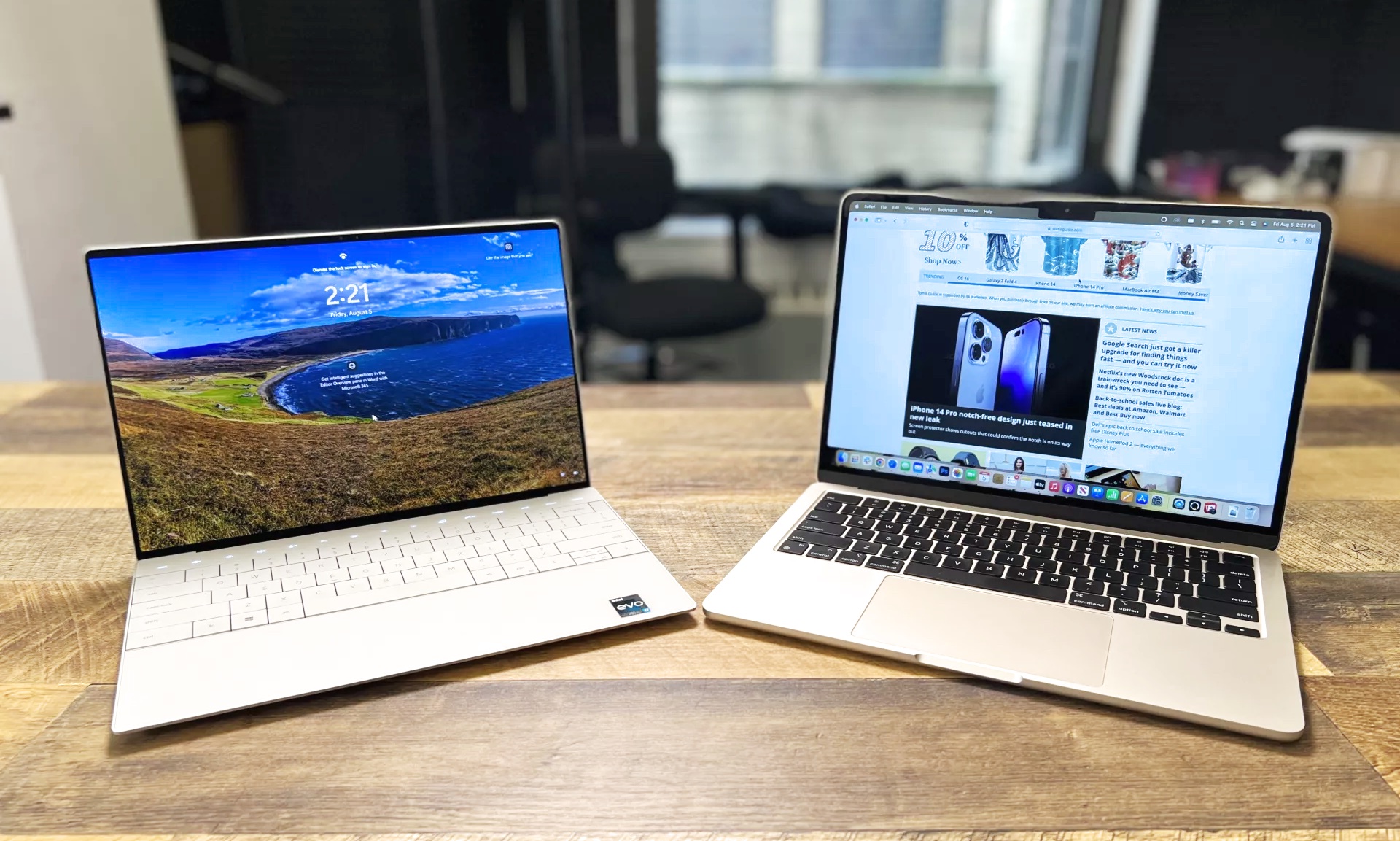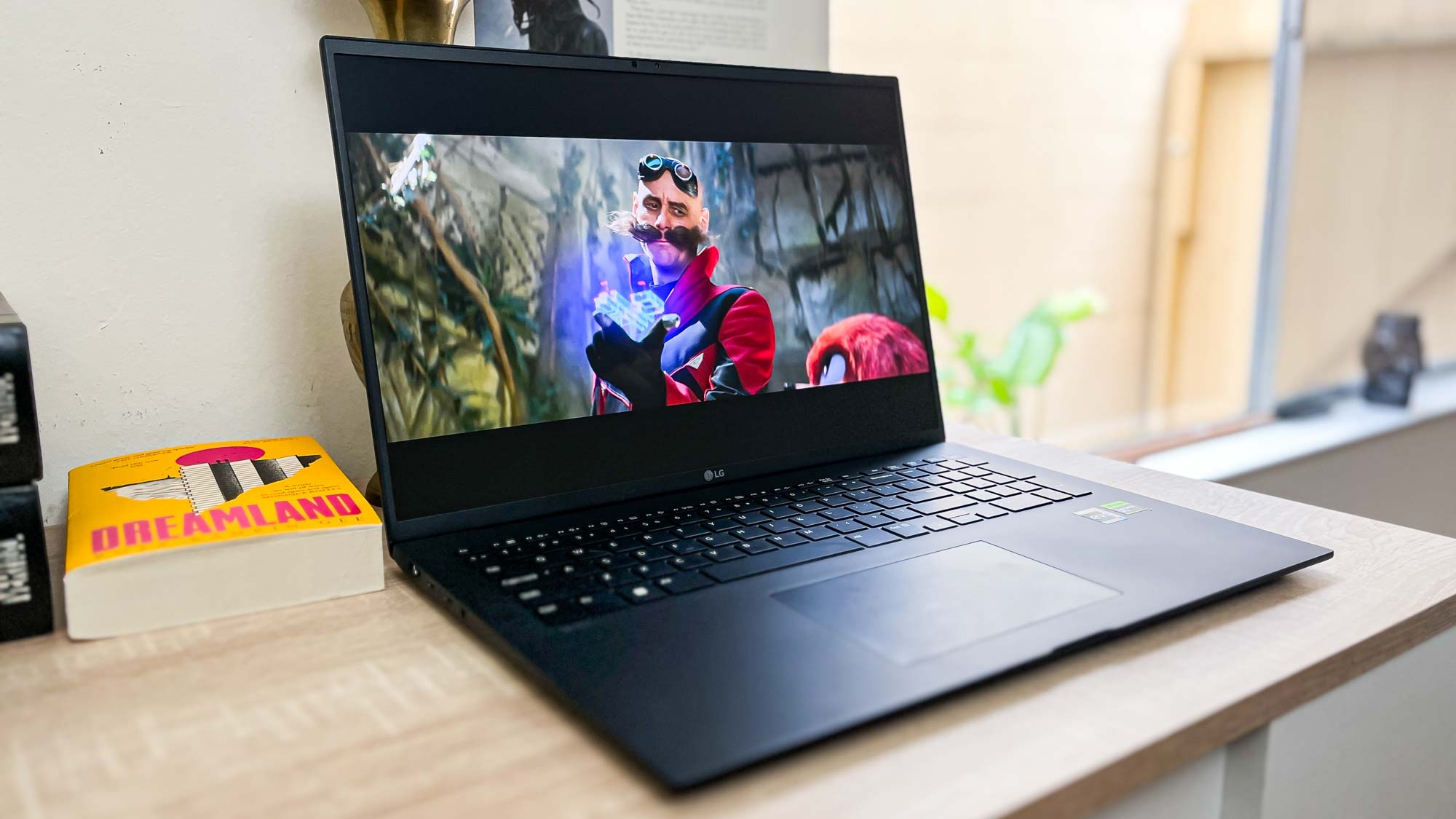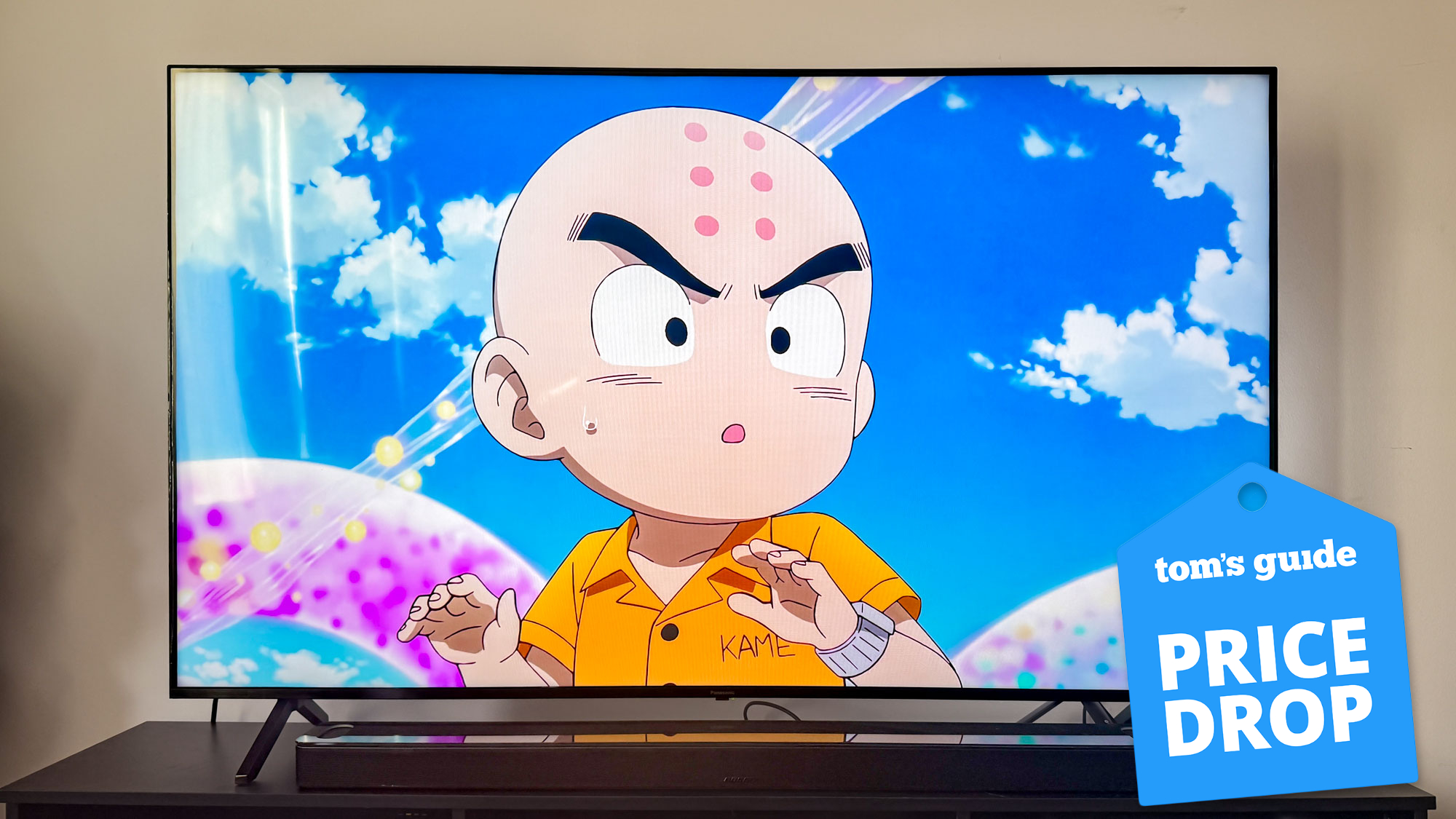Laptops are getting smaller and smaller every year, and I can't take it anymore
With thin-and-light ultraportables like the XPS 13 Plus sacrificing comfort for portability, 2023 is the year I say: this small and no smaller.

Laptops don't need to get any smaller. They're thin and light enough.
There, I said it! I feel like I've done something taboo by admitting I'm tired of the industry's endless quest for thinner, lighter laptops, but I'm fed up.
I review loads of laptops as part of my work here at Tom's Guide to pick the best laptops for you, and every year we see a slew of new ultraportables pitched as productivity powerhouses so light and easy to carry you'll forget they're in your bag.
And it's a beautiful dream! Let me be clear, I'm not here to rain on anyone's parade or tell you you're wrong for appreciating the razor-thin design of a laptop like the MacBook Air M2. The remarkable success of Apple's slimmest, lightest MacBook seems to have inspired just about every major player in the industry to offer their own competing 13-inch ultraportable, so you have lots of options to choose from.
Many are quite good, too! I personally like the Asus Zenbook S 13 OLED I reviewed earlier this year, and the slightly more expensive 14-inch Acer Swift 5 is even more impressive. Both are lighter than a MacBook Air and nearly as thin, which is a remarkable feat of engineering.
But these machines are also so small it's hard for me to use them for sustained work without plugging in an external mouse and keyboard. And that's troubling because I'm hard-pressed to see the value I'm getting in return for sacrificing the size required to support a broader keyboard or a bigger display.
It's not the race for smaller, better technology that's driving me nuts. It's the seemingly single-minded focus on thinner and lighter that kills me. What about bigger and lighter? What about faster and more comfortable?
I know I must be missing out on a lot of the charm of these laptops since I find them so uncomfortable to use. I bet there are loads of folks out there who love their thin-and-light 13-inchers, and again I say: more power to you! I wish I was right there with you still. I have oddly fond memories of hunching over a cafe table in the early 2000s madly typing up articles on a little 11-inch netbook, so I Get It.
Get instant access to breaking news, the hottest reviews, great deals and helpful tips.
But I just can't hack it anymore — I'm ready to admit laptops have gotten too small for me and my big dumb hands.
Comfort over convenience
The Dell XPS 13 Plus is the laptop that pushed me over the edge.
I reviewed one of the new 2023 models last month, and as elegant as it is I just can't get over the small, cramped "zero lattice" keyboard and frustrating capacitive touch row. Together they help set the XPS 13 Plus apart from the cheaper XPS 13 and give it a sleek look, but I hate using them.
Having all the keys snuggled together edge-to-edge instead of spacing them out looks slick, but when I actually try to type on the XPS 13 Plus I find my hands feel more cramped than I'd like. I also become a slower, more cautious typist because I'm afraid of accidentally hitting another key anytime I rest a sausage-like finger on the board. I can't say for sure why Dell took this tack when designing the XPS 13 Plus keyboard, but I bet it would be more comfortable if it was wider and the keys had room to breathe.
I have a better idea of why Dell stuck that capacitive touch row atop the XPS 13 Plus keyboard instead of a more traditional function key row, and it has to do with power. When we first saw the XPS 13 Plus unveiled at CES 2021 a Dell rep explained that the company put a capacitive touch row in so it could use the space normally taken up by physical function keys to support the higher power demands of the laptop vs. a plain Dell XPS 13. Whether that means better cooling, a bigger battery or just more components to support the CPU, it helps explain why Dell ditched the function keys for capacitive touch "keys" that don't actually move.
But as nice as it is to have the power of a modern Intel Core i7 CPU in such a slim and light laptop, it doesn't make up for the loss of physical function keys—at least, not for me. In my Dell XPS 13 Plus (2023) review I was pretty critical of how unreliable the capacitive touch row was when it came to registering my presses, to the point that I often had to hit a key 3-5 times before it would detect my finger. Now weeks later I'm still having that issue, so if there's a learning curve to this funky keyboard I'm still way behind it.
The fact that the LG Gram 17 Pro is just half a pound heavier than the Dell XPS 13 Plus and 0.1 inches thicker, yet offers a far more comfortable typing and viewing experience, is what really has me fed up with the chase for an ever thinner, lighter laptop
And then there's the screen. The ultra-thin bezels of the Dell XPS 13 Plus really help the display look its best, and if you splurge for the 3.5K OLED upgrade I think you'll be pleased with how good it looks. It's one of my favorite things about the laptop, but it will also humble you if you think you have great eyesight, because 3.5K resolution on a 13.4-inch display is a recipe for eye strain.
It's the screen that convinced me I'll never buy a 4K laptop, because I had to crank the Windows 11 display scaler up to 300% to even read my email on the XPS 13 Plus. And while the high resolution and HDR support mean I could theoretically enjoy some of the best movies on Amazon Prime in nearly 4K quality on the gorgeous OLED screen, a lot of the appeal of having all those pixels is lost when you have to squint and hunch down in front of a tiny laptop to spot them.
Every one of these complaints would be addressed if the laptop were simply bigger. And there are loads of great laptops out there that are bigger, including some from Dell. I personally still think the Dell XPS 15 OLED is one of the best 15-inch laptops you can buy because it feels like the perfect compromise between power and portability for me, packing enough muscle to burn through serious workloads or play games while remaining slim and light enough to toss in a shoulder bag.
But as hype continues to rage around ever-smaller, thinner laptops I'm afraid even well-made machines like the XPS 15 will get redesigned in ways that sacrifice comfort in the name of convenience.
Now as a 6'4" fella I know I'm not the most sensitive to the difference in size and weight between even an XPS 13 and 15. To me these laptops are all pretty portable, and the fact that the XPS 13 Plus is so small I can throw it in my glove compartment with room to spare is more a novelty than a killer feature. For some people that kind of convenient portability absolutely is a must-have, and I'm not asking laptop vendors to give up on satisfying those needs just so a fool like me can count on bigger, more comfortable keyboards and screens.
But as 2023 winds down around us I see no signs anyone is giving up the quest for an ever thinner, lighter laptop. That makes me a little sad, because I think we've hit a sweet spot in the laptop market thanks to rapid advances in mobile components that make the benefits of a thin-and-light ultraportable achievable even on bigger, beefier laptops.

Case in point: Right now you can get a great big 17-inch laptop like the LG Gram 17 Pro (2023) that's nearly as thin and light as a MacBook Air yet offers a spacious keyboard, big screen and enough room inside for a discrete Nvidia 30-series laptop graphics card. Sure it's more expensive and won't fit in my glove compartment, but it does deliver all the usability of a big screen and keyboard in a remarkably portable package light enough to throw in a backpack and forget about.
The fact that the LG Gram 17 Pro is just half a pound heavier than the Dell XPS 13 Plus and 0.1 inches thicker, yet offers a far more comfortable typing and viewing experience, is what really has me fed up with the chase for an ever thinner, lighter laptop.
It's not the race for smaller, better technology that's driving me nuts. It's the seemingly single-minded focus on thinner and lighter that kills me. What about bigger and lighter? What about faster and more comfortable?
There's so much good stuff hitting the laptop market every year, and it kills me to see companies with great products handicapping themselves by trying to design incredible PCs in these tiny little chassis. If you're still hungry for ever thinner, lighter machines I wish you well, but this is the year I give up on trying to fit in with the ultra-slim crowd.
More from Tom's Guide
- AMD vs. Intel vs. Apple vs. Qualcomm: Who’s winning?
- AI is key for Intel's new Meteor Lake CPUs
- Apple M3 chip: Early rumors and everything we know

Alex Wawro is a lifelong tech and games enthusiast with more than a decade of experience covering both for outlets like Game Developer, Black Hat, and PC World magazine. A lifelong PC builder, he currently serves as a senior editor at Tom's Guide covering all things computing, from laptops and desktops to keyboards and mice.

